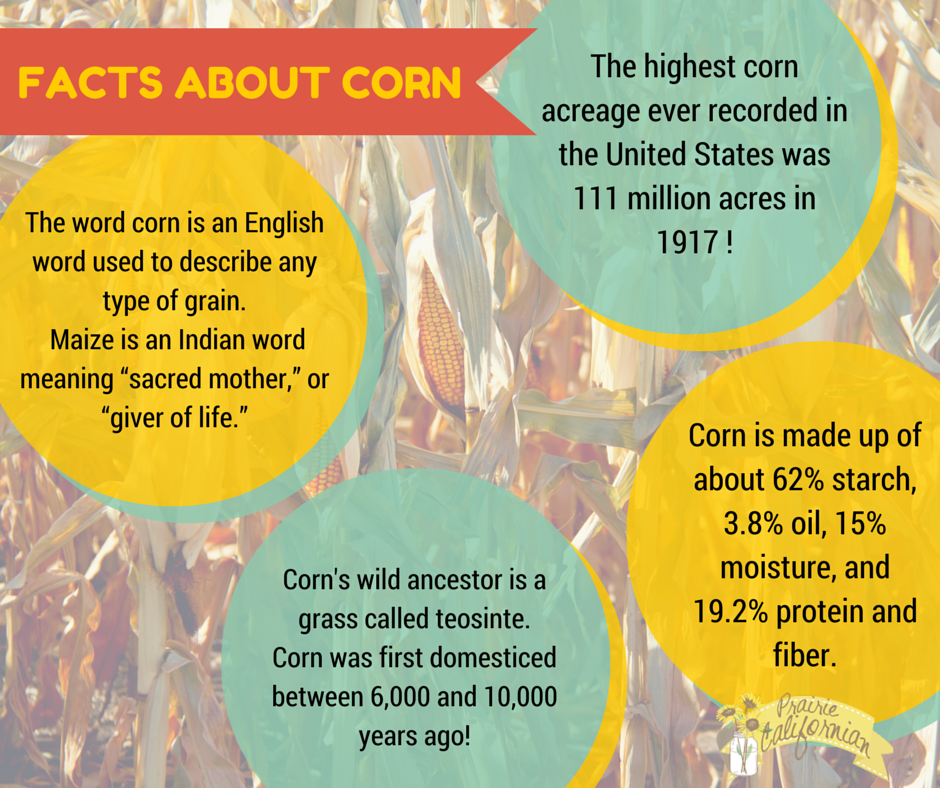
Corn seems to be the crop we always throw stones at. Either we’re growing too much corn or farmers are becoming too rich off of growing corn or corn is the devil because most of what is planted in the United States is biotech corn.
Whatever the argument against corn is, let’s start with the history. The facts of how and why corn made it to the United States. And what the heck is all this corn used for?
Why Do We Plant Corn?
Corn, for the most part, is an opportunity crop in our area. If you can get quality yield and good prices, corn does very well for us. But you can only sustain so many acres in corn because it’s a hedge on risk. Some years we grow good corn and some years we grow not so good corn. Therefore, planting a variety of crops for our operation lowers our risk.
We can also have a great short season and a bad long season or vice versa which is another reason why we utilize a variety of short season AND long season crops. We plant our corn early, as corn is a full season crop, and on soybean ground because the soybeans leave us with low residue in the field. Out of the four crops we plant, two are broadleaf and two are grasses. We cycle them through in rotations from grass to broadleaf and repeat. A rotation like this also allows us to change modes of herbicide action so that we aren’t putting the same herbicides on the field time and time again.
How Did Corn End Up in the United States?
The word corn is an English word used to describe any type of grain, but using it most people are referring to maize. Maize is an Indian word meaning “sacred mother,” or “giver of life.”
The actual story of how corn ended up here is full of many unknowns. We tend to believe that the crop spread up from Mexico and took hold in the American Southwest about 4,000 years ago. However, new research has been tracing the route the crop may have traveled and ultimately how the genetic changes it went through on the journey to become the corn we know today!
The wild version of our modern corn is called teosinte. It is a species of grass that grows in warm, damp environments of central Mexico, where it was first domesticated between 6,000 and 10,000 years ago.
It can be agreed upon that corn is one of the most important cultivated plant in ancient times in America. Early North American expeditions have shown that the corn-growing region extended from southern North Dakota all the way to Argentina and Chile.
Historically, corn may have ranged from no more than a couple feet tall to over 20 feet tall. It was not at all the uniform sized plant that most of us see today as we drive across the Midwest. Corn played an important role in the development of the Midwest as movement westward continued. Corn found itself in the woodland clearings and grasslands of Ohio, Indiana, Illinois, and Iowa.
It is recorded that as early as 1880, the United States grew over 62 million acres of corn… Think about that, that is incredible! By 1900, the figure had reached 95 million acres (which is more than we grew in 2014!). The highest acreage ever recorded in the United States was 111 million acres in 1917 and still holds the record.
That is pretty incredible to think that our corn acreage hasn’t changed much over the last century. What has changed, however, is the yield of our corn. From the beginning of records in 1880s through the mid-1930s, there was no significant increase in national average yield. It wasn’t until the technological advances in the early 1940s that corn yields started to show significant increases. Prior to this, the highest average yield was in 1906 at 31.7 bushels/acre. In 2014, the average yield was around 168-170 bushels/acre.
Think about that. We are producing 5x as much corn on fewer acres in just over 100 years time. As farmers we talk a lot about producing more with less, I think that is a pretty solid example of that. So why do we have these higher yields?
Genetics play a huge key. Currently, the vast majority of corn on the market has traits that help make them resistant to pests as well as disease. Technology has also helped farmers control weeds better as well as using more environmentally friendly farming practices in general. Biotechnology, specifically, has played a key role in moving many farming operations to no-till which reduces the need for petroleum inputs.
Where is Corn Grown?
Corn is grown in most U.S. States, but production is mostly concentrated in the Heartland region including Illinois, Iowa, Indiana, eastern portions of South Dakota and Nebraska, western Kentucky and Ohio, and the northern part of Missouri. Many call this the “Corn Belt” however, it doesn’t really resemble a belt at all. Iowa and Illinois are the two top corn producing states and typically account for more than one-third of the U.S. crop!
The Heartland region or Corn Belt has an excellent climate for corn production. This area of the United States usually receives adequate rainfall paired with a long, hot growing season. The area also tends to received fewer dry spells in comparison to the Great Plains or Mountain regions. Topography also plays a key role. Much of the land is level which makes it relatively free from erosion and well adapted to efficient machine methods of production. Much of it, however, does require drainage.
What Do We Use All of This Corn For?
As I talked about a little last time, the majority of the corn grown in the United States is what is called field (or dent) corn. Field corn is what 98% of the corn grown in the United States is. That sweet delicious corn we all love and enjoy at the supper table, it is called sweet corn.
There is on average about 180,000 acres of sweet corn grown yearly in the United States, with about 69 percent produced for the fresh market and 31 percent for the processing market. The top sweet corn producing states are Minnesota, Washington, Wisconsin, California, and Florida. Stark contrast between the Corn Belt states mentioned above.
Field corn is very different from sweet corn, mainly in that it doesn’t taste good off the cob. While sweet corn is harvested while the husk is still green and the corn is full of moisture and plump, field corn is harvested when the husks are dried and brown and the inside corn cobs have lost moisture and dimpled. Farmers call it dented, hence the name dent corn.
We will continue to discuss field or dent corn. In order to understand how and why corn is used, let’s take a look at the makeup of corn.
Corn has food, feed, and industrial uses. Food, seed, and industrial uses account for only about one-third of domestic utilization of corn. It is said that corn can be found in more than 500 different products. Anything from paints, plastics, adhesives, antibiotics, textiles, soaps, sand paper, tires, carpeting, and fiberglass. As well as things we know like corn meal, corn flour, tortillas, whiskeys, corn starch, and many other corn derived products.
During processing, corn is either wet or dry milled. Wet millers process corn into high-fructose corn syrup (HFCS), glucose and dextrose, starch, corn oil, beverage alcohol, industrial alcohol, and fuel ethanol. Whereas dry millers process corn into flakes for cereal, corn flour, corn grits, corn meal, and brewers grits for beer production.
Corn historically has a major component in livestock feed. However, the amount of corn used for feed also depends on the crop’s supply and price and the supplies and prices of competing ingredients. In the past decade, ethanol production has taken on an important role in corn growing. Ethanol can be produced utilizing either dry or wet milling methods. The process generates a variety of economically valuable products like distillers dried grains with solubles (DDGs), which are then used as a feed ingredient for livestock. Only the starch in corn is used to make ethanol which leaves the nutrients, protein, fiber, and oil in the DDGs.
Conclusion
It is hard to think of a crop that is more deeply embedded into who we are as Americans. Corn has been on the forefront of innovation and fueling our economy for many decades. I have to say the National Corn Grower’s Association captured what the spirit of corn production means in this nation:
Corn nourishes our cultural identity, lighting night skies on Independence Day and filling traditional cornucopias at Thanksgiving. Our nation’s corn farmers, through their unwavering dedication and steady perseverance, grow a crop that sustains our people, feeds our economy and buttresses our national identity.
I don’t know about you, but many of the facts and figures I found while writing this shocked me! After doing some digging and research, corn isn’t exactly the demon so many people make it out to be. Corn has been and continues to be an important and integral part to the United States and the many farmers across this nation who grow corn.
Resources
Capehart, T. (2015). USDA Corn Background
Erickson, B. (2013). Bio Comments on U.S. House of Rep. Committee of Energy.
Gibson, L & Benson, G. (2002). Origin, History, & Usage of Corn.
Hansen, R. (2013). Sweet Corn Profile.
Manning, K. (2012). Genetically Modified Foods.
National Corn Growers Association. (2014). World of Corn 2014.
National Corn Growers Association. (2013). World of Corn 2013.
Wade, Lizzie. (2015). How Corn Became Corn.

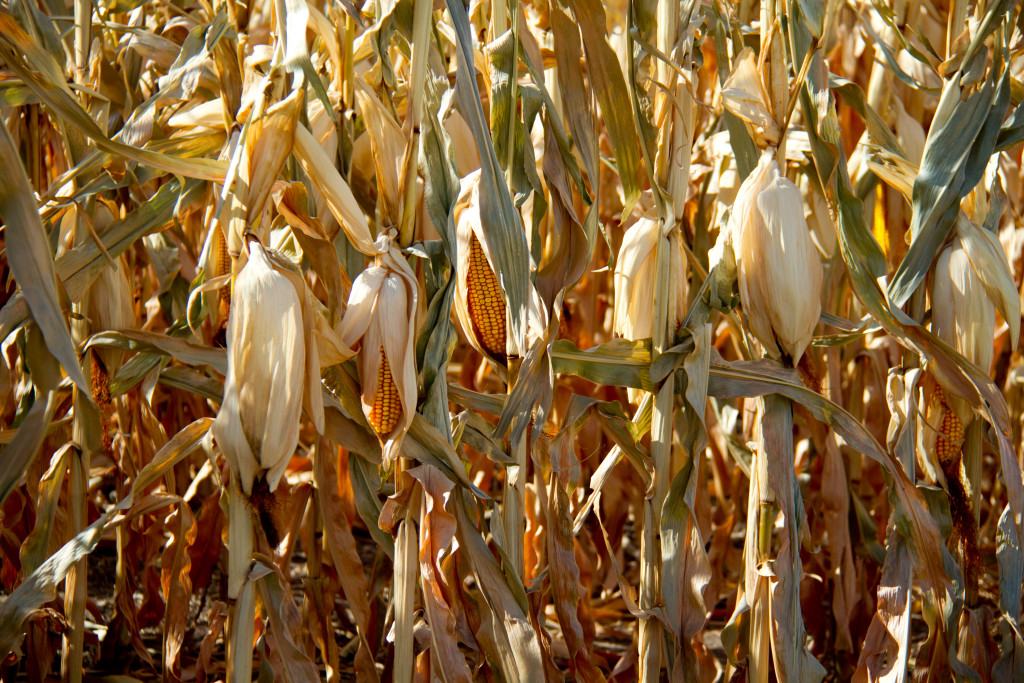
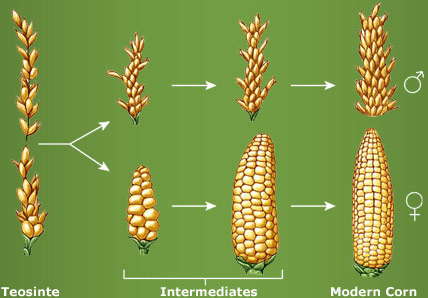
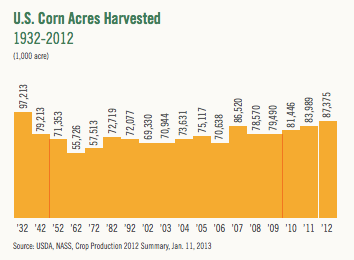

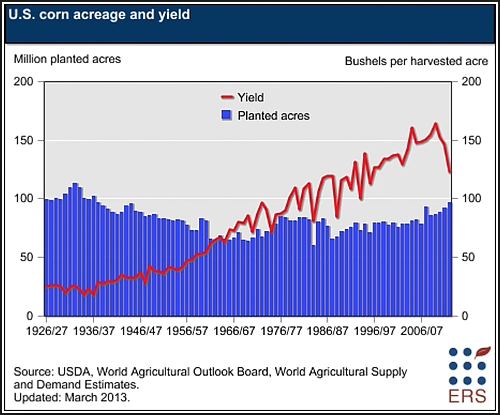
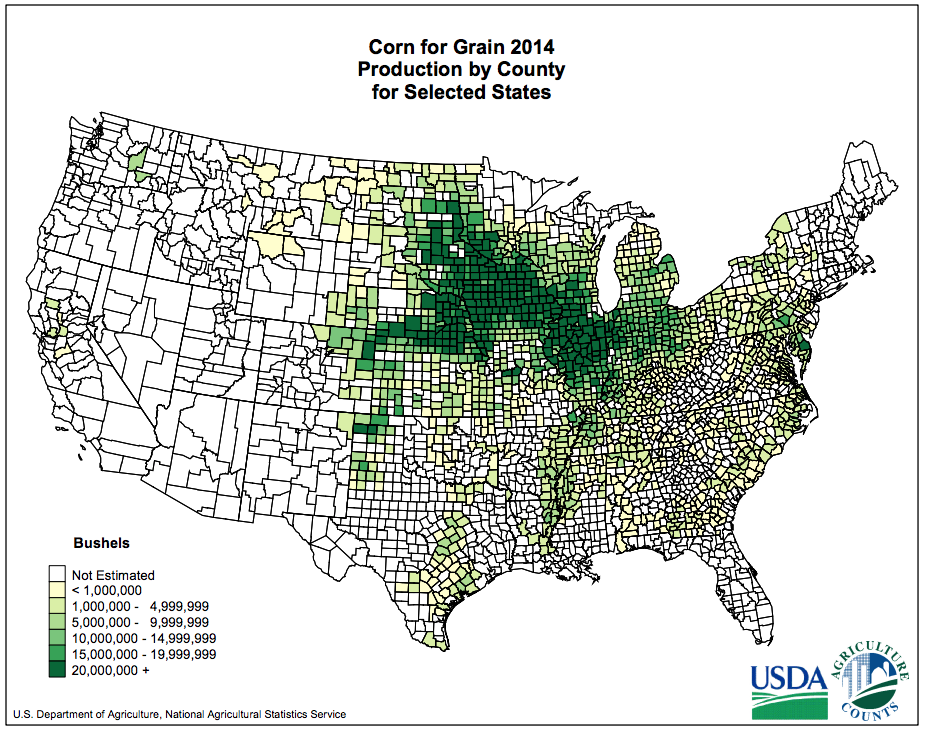

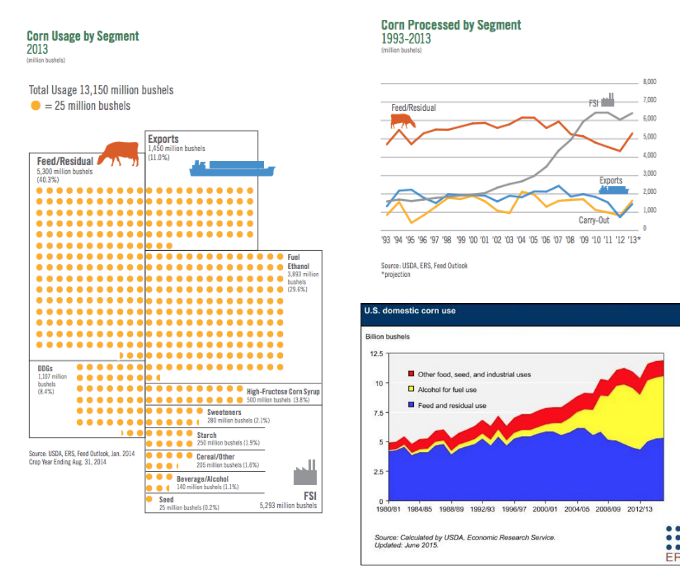
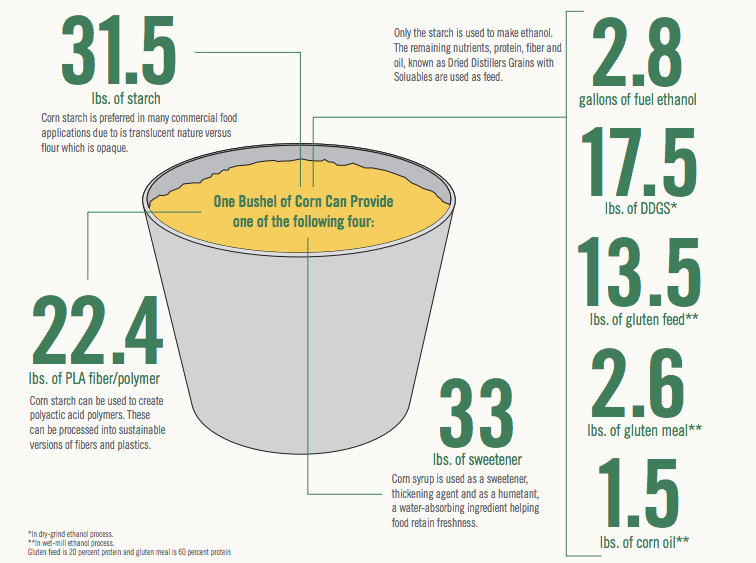
I love this article Jenny! So much good information! 🙂
I found the facts about total land acreage of corn planted very interesting vs. increased yields very interesting. Thanks for this great article!
Author
I was really surprised by those numbers too!!
Apart from how great popcorn is, I love how diverse the crop is. Mainly the new advances in bio-fuels and consumer products (absorbents, pharmaceuticals, even drywall) is so exciting. Scientists are really opening up the limits to what we can do with a natural plant. Who knew how exciting corn could be!
I always wondered why we don’t call it maize more often. It seems like in other languages (that I know) they use maize, or a variation of it. I really liked the picture illustrating how corn has changed to the modern corn we have today. I think stuff like that is interesting though. Thanks for teaching me something new today.